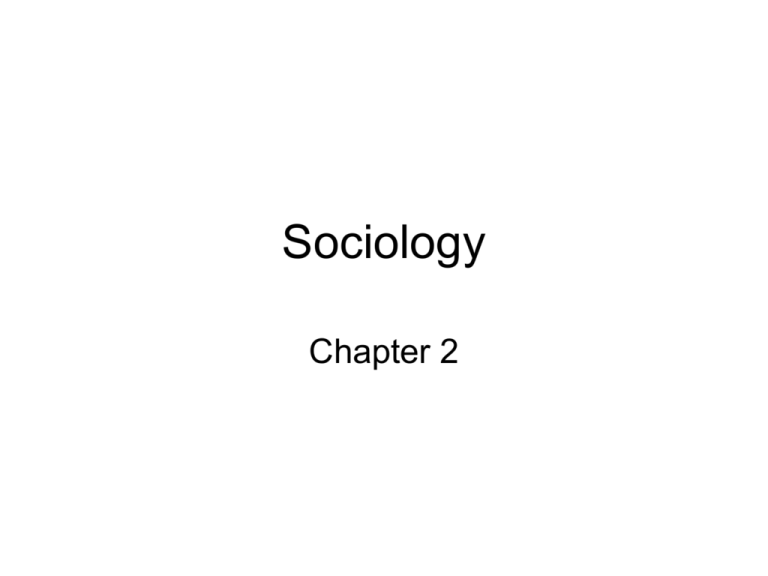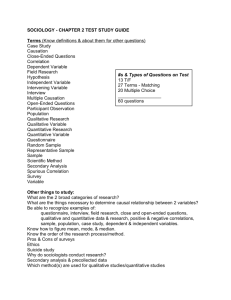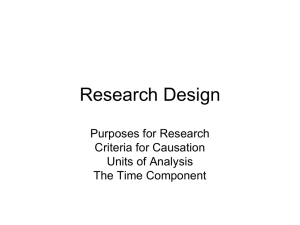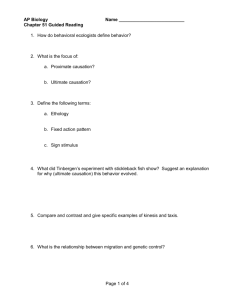Sociology
advertisement

Sociology Chapter 2 Section 1Research Methods • Goal is to test common sense assumptions and replace false ideas with facts and evidence • Focus on why and how • No actual laboratory to conduct research (need real life situations) Quantitative research • Numerical data – Surveys – Precollected data- ex: census – 90 percent of their research is by survey Survey research • Good for studying a large number of people • Two groups: population and sample – Population: Those with characteristics a researcher wants to study – Sample: is a limited number of cases drawn from the larger population Sample • Representative sample – Must have the same basic characteristics as the general population – How do you get a sample • Randomization- unbiased Gathering information • Questionnaire • Interview • closed ended questions- Ex: multiple choice or scale • Open ended questions- very difficult to analyze, opens the door for opinions and biased responses, Question might be interpreted incorrectly Secondary analysis • Using precollected information – The United States Census – US department of Labor – US department of Commerce Qualitative research • Use of narrative or descriptive data • Field research – Looks closely at aspects of life that can not be measured with numbers and are best understood with in a natural setting – Use of obervation: ex “cliques” with in a school environment Case study • A thorough investigation of a single group, incident, or community • Generalize this information to similar situations – Ex: a case study of gangs in New York city can be applied to other large cities – The researcher also needs to point out in his/her case study things that might be unique to that particular city Participant observation • The researcher becomes a member of the group being studied – EX: if a researcher is studying recovering alcoholics and decided to become part an AA group Section 2 Causation in Science • Events occur in predictable nonrandom ways • Multiple causation – An event occurs as a result of several factors working in combination • Ex WWI-powder keg Variable • Characteristic: age, gender, education, occupation etc. • Variables can be quantitative or qualitative, independent or dependent • Quantitative variable- numeric • Qualitative variable- categories ex: male/female, yes/no, marital status etc Variables • Independent variable – A variable that causes something to occur • Time spent studying for a test • Dependent variable – The result from the change in the independent variable • The final grade on the test Intervening Variables • Influence the relationship between an independent and dependent variable – Government intervention to help end a situation – Ex: program designed to end hunger correlation • Measure of how things are related to one another • A correlation DOES NOT MEAN causation • Can be positive or negative • Positive – Longer time spent studying increase the grade • Negative – Longer time spent watching TV the grade goes down Standards for showing causation • Open books to page 53 Section 3 procedures and Ethics in research • Research procedures – Identify the problem – Review literature – Formulate hypothesis – Develop research design – Collect data – Analyze data – State findings and conclusion Ethics in research • Strict codes that must be followed when conducting research – Unfortunately not all research believe or follow these codes • Nuremburg trials- 24 doctors convicted of conducting sadistic experiments on inmates • 1932-1972 US intentionally did not treat 400 syphilitic Africans Americans so they could tract the evolution of the disease








